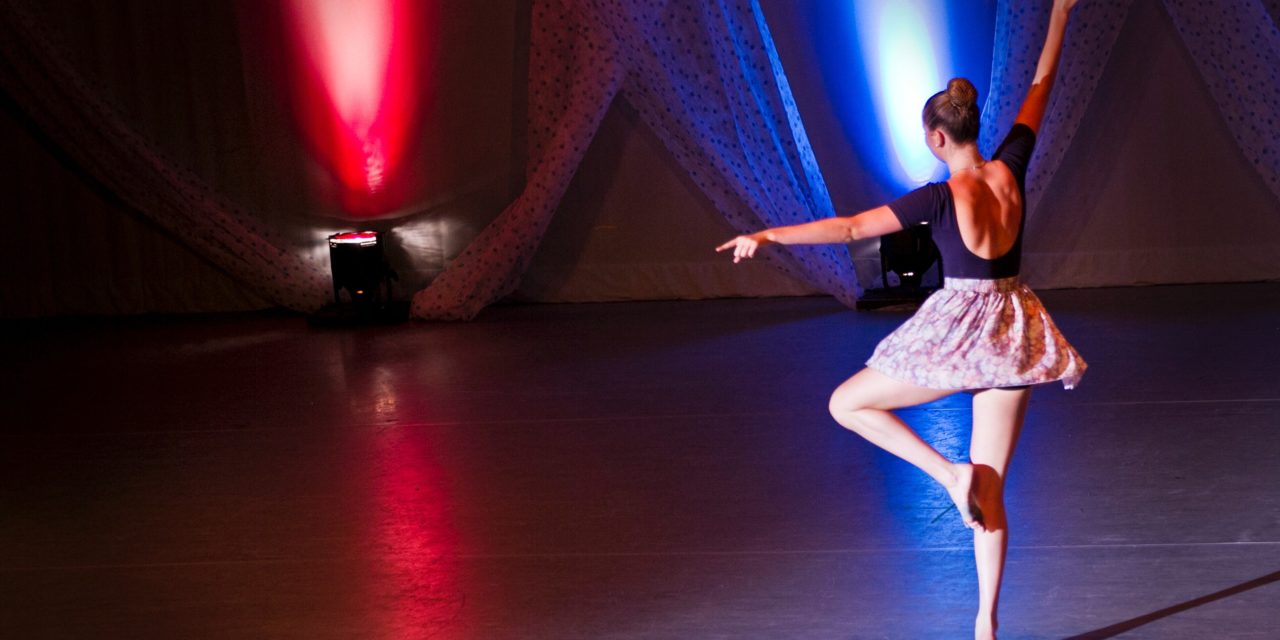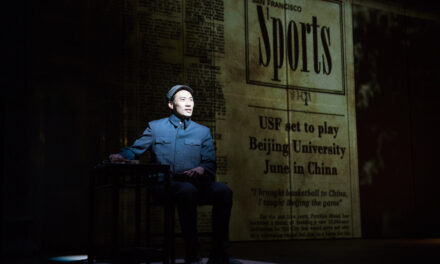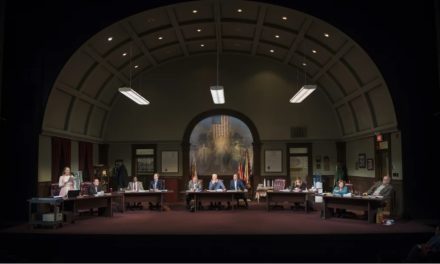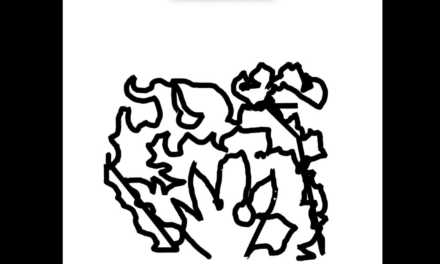Mitt Romney’s offhanded crusade against Big Bird, announced in a presidential debate with President Obama during the last election cycle, put naked fear in the hapless hearts of children, puppets, and adults alike. Although the dread over Big Bird’s impending demise was a rare case of bipartisan consensus, particularly troubled were those adults whose left-of center living one way or another depends on government-subsidized arts and culture. In response to the perceived existential threat, our cultural elites mobilized their young and their old to preemptively stand up with Big Bird against the nonchalantly murderous cost-cutting impulse of Romney’s potential administration. A swift media campaign of witty Facebook posts, campy cartoons, and sassy Twitter feeds followed. Amidst the buoyant battle of the wits, a few sheepish voices shyly noted that the futures of neither Big Bird nor Sesame Street are as bleak as Romney’s self-assured campaign managers would like us to believe. From 2003 to 2006, the Sesame Workshop venture itself earned $211 million, with its CEO, Gary Knell, making a cool $988K salary last year alone, and Big Bird’s puppetmaster, Caroll Spinney, making half that amount (tell that to your mom the next time she complains that playing with puppets is not a viable career option).
The panicked overreaction to Romney’s dispassionate, technocratic proposal with regard to Big Bird’s financial prospects, however, was a displaced fear over a much more troubling realization that slowly if furtively is beginning to dawn on the nation’s cultural workers. With our skyrocketing national debt reaching inconceivable numbers and a multitude of quickly accumulating social, medical, and economic national exigencies, when the bell of austerity finally tolls announcing the inevitable curtailing of our wild and free national budget (sequester, anyone?), arts and culture will be among the first to surrender their government subsidies simply because beyond the few jobs for artists and art managers, arts and culture provide no tangible or measurable social benefits – at least as perceived and bluntly verbalized by Romney’s fiscal brethren, who’ll remain eternally skeptical about the arts’ intangible and enigmatic so-called community-building proclivities.
With the news of heavily indebted and despondent European governments (Italy, France, Spain) finding recourse in draconian cost-cutting measures with regard to even their most well-established, most revered and most cherished cultural institutions, the American cultural elites couldn’t help but channel their anxieties over the financially bleak future into the innocuous-enough case of Big Bird, who suddenly came to symbolize the perennially complex and queasy relationship between the artistic boheme and the bourgeois backed nation-state and its money. Traditionally, this relationship has always been the most problematic with regard to the performing arts. Unlike painting or writing, which more often than not are solitary pursuits, theatre, opera, and other performing arts are collective endeavors that require institutional infrastructure if they are to exist at all. Thus, the quarrel over Big Bird had touched a particularly raw nerve in our already underfunded, if bravely mostly self-sustaining, theatre community.
Historically speaking, unlike the U.S., where the tradition of government funding of the arts is still fairly new and meager, European governments have had a well-established convention of heavily subsidizing their cultural institutions, particularly their performing arts. In exchange, the performing arts, theatre, and opera, in particular, have been tacitly fulfilling a specific social function: they funnel and promote the unified voice of the nation as an expression of the cultural and national identity of its people (See The State Balshoi Ballet as one case in point). Since the idea of nation and national self-perception has always been a porous and unstable reflection of ‘imagined community’ – to use Benedict Anderson’s well-known concept – the performing arts meta-theatrical role has been foremost to perform the spectacle, the ocular proof, of the national unity by deconstructing and reconstructing a sense of national difference. To quote Nadine Holdsworth, director of the National Theatre in London, theatre is:
Intrinsically connected to the nation because it enhances ‘national’ life by providing a space for shared civil discourse. [T]heater is deeply implicated in constructing the nation through the imaginative realm and provides a site where the nation can be put under the microscope. [T]heater often deploys its content, formal properties and aesthetic pleasure to generate a creative dialogue with tensions in the national fabric. [In democratic societies the] raison d’être of most state-of-thenation plays is to explicitly critique the nation [and] to destabilize the homogenous national image, [opening up] a creative space for exploring the paradoxes, ambiguities and complexities around issues of tradition, identity, authenticity and belonging associated with the nation.
This symbiotic arrangement of money for services rendered between theatre and the nation-state has its origins in the oligarchical roots of artistic patronage, with theatre’s institutional role, at its origins, being foremost an extension and expression of the royal voice and power. Founded and financed by Louis XIV in 1680, the Comédie-Française, for example, was initially meant to be part of the French roi machine, charged with negotiating and communicating the King’s moral and aesthetic outlook (as the King’s swift censorship of Molière’s Tartuffe aptly illustrates). Before the Comédie, playwrights served the King via Cardinal Richelieu, whose moral and aesthetic vision they were hired to realize and promote (which in 1637-38 led to the famed quarrel over Corneille’s structurally blasphemous Le Cid). Eventually, the stage of the Comédie became a public forum where the issues of national identity, language, and cultural self-perception would often intertwine and be decided by its choice of season. From the political split over Joseph Chénier’s 1789 anti-monarchical play Charles IX to the riots over Victor Hugo’s Romantic, anti-classical form of Hermani, the Comédie became a performative space of France’s national identity as deconstructed, performed and defined by its drama. Today, supported by its government, Comédie has learned to engage in a nuanced dance between the conservative project of preserving the established national self-image and the progressive project of questioning its current and future assumptions; preserving and promulgating the sense of national pride while subversively entertaining progressive ideas (as Comédie’s current mix of – predominantly – classic and – less prominent – experimental productions show).
In the political landscape of the last century, the European governments’ funding of the arts eventually expanded its social function to support all the hungry artists who would otherwise wallow in their romantic bohemian penury, stricken and thus dangerously discontented. The nationally supported theatre became a question of social stability as many governments coolly calculated that hordes of impoverished and disgruntled artists and intellectuals were as dangerous as – if not more than – hordes of artistically and intellectually less inclined and less ambitious paupers – a keen assumption that a number of early twentieth-century revolutions and revolutionaries empirically demonstrated.
Thus, acting on the post-revolutionary conclusions, many European governments, particularly the totalitarian ones, which had the convenience and good luck of complete state ownership of all the nation’s cultural institutions, had the good sense to bribe their cultural elites into submission. These states sensibly concluded that even the most politically inclined artist only rarely rebels against the government that supports him; in fact, with the skillful employment of carrot-and-stick management techniques, said artist might even consider it ethically expedient to support the benevolent and generous state with his art. The subtle mechanics of this tacit agreement came into full prominence with the flourishing of propaganda art particularly, at the pinnacle of its style, Socialist Realism.
Privileged to be among the last generation of Poles to grow up in one of the twentieth century’s most interesting social and political experiments, I had the opportunity to observe firsthand how this intricate relationship between art, money, and politics can play out. Thus, on the one hand, the Polish communist government fully subsidized its national theatre, “never stinting it money or other means.” On the other hand, theatre was used as a tool of political propaganda, “an export” product meant to enhance Poland’s international reputation, promoting “Polish culture abroad, [while masking] communist power by showing its ‘human face.’” The oppressive political climate, however, created conditions in which free expression was significantly curtailed, if not impossible. As a result, artists and the government that supported them existed in a perverted kind of mutually beneficial sadomasochistic embrace that provided a raison d’être for both of them. The coupling of art and state money paralleled Sade’s master-and-slave dialectic. To quote Simone de Beauvoir: “What the torturer demands, is that, alternating between refusal and submission, whether rebelling or consenting, the victim recognize, in any case, that his destiny is the freedom of the tyrant. He is then united to his tyrant by the closest of bonds. They form a genuine couple.” Czeslaw Milosz, the Nobel Prize-winning Polish writer, similarly described the dynamic between the artist and the totalitarian state, pointing out the ironic superiority of genuine political oppression over the economic indifference of market-driven liberal democracies. Political oppression, Milosz writes, “brings comfort, fostering dreams of what might be, and even the enclosing fence affords the solace of reverie […] Fear of the indifference with which the economic system of the West treats its artists and scholars is widespread among Eastern intellectuals. They say it is better to deal with an intelligent devil than with a good-natured idiot.” With the fall of communism in Eastern Europe, government subsidies for many cultural institutions have been significantly curtailed. Like in other former socialist countries, in Poland too, artists – in particular, theatre artists – faced significant government cuts, thus finding themselves forced to create social justification for their continuous public sustenance outside of selfregulating market forces. Unable to concede that their primary social function has been to a large degree the production and management of the national identity in collaboration with and opposition to the government that previously supported them, artists began arguing for art for “art’s sake.” True art, the argument goes, has no purpose other than itself, and should remain independent of moral, social, political, and economic demands. In addition to the aesthetic and philosophical question that such an argument evoked (Does art indeed have intrinsic value, as Wilde, Poe, and Schopenhauer once argued?), another persistent problem remained: if art is, in fact, autotelic, and if it thus provides no services to the state beyond its mere existence, does it still deserve state funding?
The concept of art for art’s sake has its roots in Romanticism, which proclaimed the superior spiritual position of the artist, whose divine-like artistic vision was said to transcend earthly concerns. Up until the Romantic period, artists were considered mere craftsmen and entertainers. It was during the Romantic period that artistic craftsmanship blended with the religious-like spirituality of the art-making process. Artists were suddenly seen as gifted with a special otherworldly quality; they were visionaries who often sacrificed their own wealth and health on the spiritual altar of communal self-fulfillment, self-awareness, and self-exploration. With the exception of the short-lived German Bauhaus school, which attempted to reclaim the status of skilled craftsmen for its artists, the Romantic vision of the artist as a spiritual creator persisted for a good part of the twentieth century. As Martin Harries notes, with the rise of totalitarian theatrics during and after World War II, “theatre artists were at once threatened and flattered by massive state ceremonies that also aspired to a grasp on the sacred. The state claimed ritualized, sacralized theatrical powers.” In competition with the increasing secularization of everyday life, on the one hand, and the politics of the totalitarian sublime, on the other, twentieth-century European theatre artists came to carve out for themselves a sacred realm that often blended with the objectives of the state that supported them. The recent economic crisis destabilized this arrangement, exposing theatre’s essentially precarious institutional position. In the U.S., theatre’s function as a marker and maker of national identity has been mostly taken up by Hollywood (which this Oscar season, incidentally, demonstrated – with the majority of nominated movies engaged with the current political discourse) and the Twittersphere. In the popular imagination, theatre remains either a form of commercial entertainment or a function of private expression. Yet, with the increased balkanization of our social and linguistic sphere and the increased bifurcation of our political landscape, an all-inclusive, national theatre, because of its liveness and physical propinquity, can provide the kind of much-needed Socratic dialogue of sustained compromise that’s absent from our public spaces, both actual and virtual.
Without the heavy subsidies that made that dance possible for European theatres, American theatre institutions (by which I mean most – not all – regional theatres) have been confounded by their own contradictions. Freed from the responsibility to speak for the people, they have mostly dissolved into stratified corporate structures, whereas the vision of the artistic director has become the singular vision demanding to be supported by the state and its audiences. Without a history of heavy state funding of its performing arts, and thus, without a history of negotiating the relationship between its artistic interests and the state’s national interests, American theatre is caught in a cognitive loop, demanding, on the one hand, funding from the state and, on the other, the freedom to exist in opposition to the state, while simultaneously preserving the Romantic allure of the theatre artist as the spiritual leader and conscience of the nation. As a result, while aspiring to reconcile these mutually exclusive objectives vis-à-vis a free market economy, American theatre find itself suspended in a stratified corporate structure, whereas the theatre’s implicit mission is to be an extension of the voice and vision of its artistic director, who expects and demands the kind of support – financial and otherwise – of his voice and vision once afforded by the royal likes of Louis XIV.
The best example of this phenomenon is the recent short-lived outburst over Guthrie’s all-male, all-white season, so much at odds with its much-lauded explicit mission of cultural diversity, yet barefacedly demanding to be supported by its audiences and taxpayers. Since there is no tradition of national theatre as such, Guthrie’s government support comes without any implicit or explicit obligation to express the national identity and the voice of the people. Since the government funding is insufficient to bribe the artists into submission, there is no tacit agreement of any kind between the theater and the state. Thus, it’s only logical that the artistic director feels fully entitled to treat the theatre in his care as an extension and expression of his own white, male identity. As with other corporate structures, the power and resources are centralized in the upper echelons of the administrative structure and thus, naturally, channel the vision and worldview of that structure. The puerile pursuit of artistic purity leaves American theatres in an eternally perpetuated power dynamic with a handful of overpaid publicity-chasing executive and artistic directors indefinitely supported by public and private money and the unpaid and underpaid labor of its youngest and most gullible masses (the discrepancy between the $900K yearly salary paid to Guthrie’s artistic director and the cohort of unpaid interns Guthrie employs is an apt illustration of this model. Surely, Minnesota taxpayers must sleep better knowing that the artistic director of their regional theatre makes eight times as much as their governor, seven times as much as their chief justice, and twice as much as the average CEOs of their major not-for-profit hospitals. After all, artistic direction requires the difficult skill of reading and deciding on which plays to stage, unlike governing or hospital administration, which requires the management of billions of dollars and millions of people). As a result of that arrangement, American regional theatre institutions are for the most part self-serving markers of upper-class belonging and what is, in essence, industry-sanctioned slave labor. Funding an American national theatre should be a bipartisan project, but it will be so only when the American theatre fully owns its obligation to be the voice of its people, all of its people so that all of its people can find national self-representation performed on its stages. This might happen if American theatre just once looks to the French for example, and do to its royal figures what the French did to theirs. And that is my modest proposal.
This post originally appeared on Performing Arts Convention and has been reposted with permission.
This post was written by the author in their personal capacity.The opinions expressed in this article are the author’s own and do not reflect the view of The Theatre Times, their staff or collaborators.
This post was written by Magda Romanska.
The views expressed here belong to the author and do not necessarily reflect our views and opinions.


















